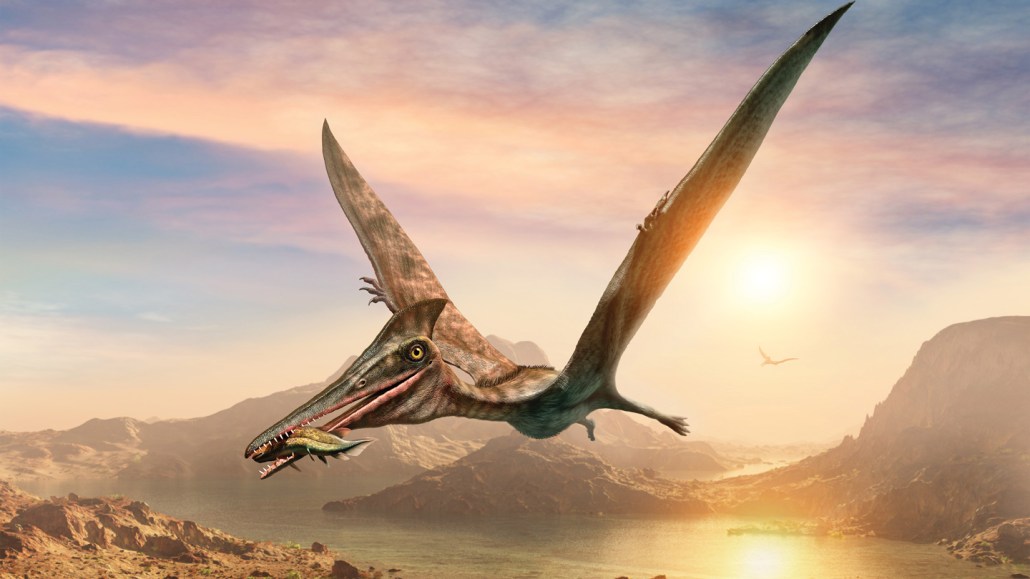Questions for ‘New fossils bring the wide world of pterosaurs to life’

The first vertebrates that took to the skies, pterosaurs originated well over 200 million years ago.
Warpaintcobra/iStock/ Getty Images Plus
Share this:
- Share via email (Opens in new window) Email
- Click to share on Facebook (Opens in new window) Facebook
- Click to share on X (Opens in new window) X
- Click to share on Pinterest (Opens in new window) Pinterest
- Click to share on Reddit (Opens in new window) Reddit
- Share to Google Classroom (Opens in new window) Google Classroom
- Click to print (Opens in new window) Print
To accompany ‘New fossils bring the wide world of pterosaurs to life’
SCIENCE
Before Reading:
- How do fossils differ from normal rock? What kinds of materials do you think are most likely to form fossils? Describe two things we might learn about the history of life on Earth by studying fossils. Consider the possible limitations of using fossil evidence to learn about the history of life. Come up with one question about a past lifeform that would be hard to answer from fossils.
- What are some ways in which bird bodies are adapted for flight? Describe two specific adaptations. If you don’t know any adaptations, feel free to do a quick internet search. Describe to what extent you could identify either of these adaptations from examining the creature’s skeleton.
During Reading:
- Besides pterosaurs, what other two groups of vertebrates have evolved flight?
- About how many years ago do scientists believe pterosaurs appeared?
- What event caused pterosaurs to die out about 66 million years ago?
- Why did scientists who were interested in pterosaurs study another group of animals — lagerpetids — for a 2020 study in Nature?
- What does Davide Foffa have to say about the likelihood of Scleromochlus taylori descendants evolving flight by gliding down from branches? What evidence led him to this conclusion?
- What are coprolites?
- What evidence led Martin Qvarnström to suggest that some pterosaurs must have been filter feeders?
- The name Balaenognathus maeuseri comes from the Latin for what phrase?
- What did the discovery of Dearc sgiathanach tell scientists about the evolution of pterosaurs in the late Jurassic Period?
- Kevin Padian believes Quetzalcoatlus northropi used its forelimbs in what unusual way when walking?
After Reading:
- Scientists often figure out some intriguing things about past life by combining multiple scientific techniques or lines of evidence. Give an example from this story where scientists combined different types of evidence or experimental approaches to reveal something about a past animal. Explain how the combined approaches led to a finding that wouldn’t have been clear from one approach alone.
- Being able to fly has a lot of benefits. And yet, as this story points out, only three known groups of vertebrates have evolved flight. Why do you think evolving the ability to fly hasn’t happened more often in life’s evolutionary history? Come up with two obstacles to the evolution of flight.
- Imagine in the future, a currently non-flying group of vertebrates becomes the fourth group to evolve flight. Which type of animal did you pick? What type of changes might have led to its being able to take flight?